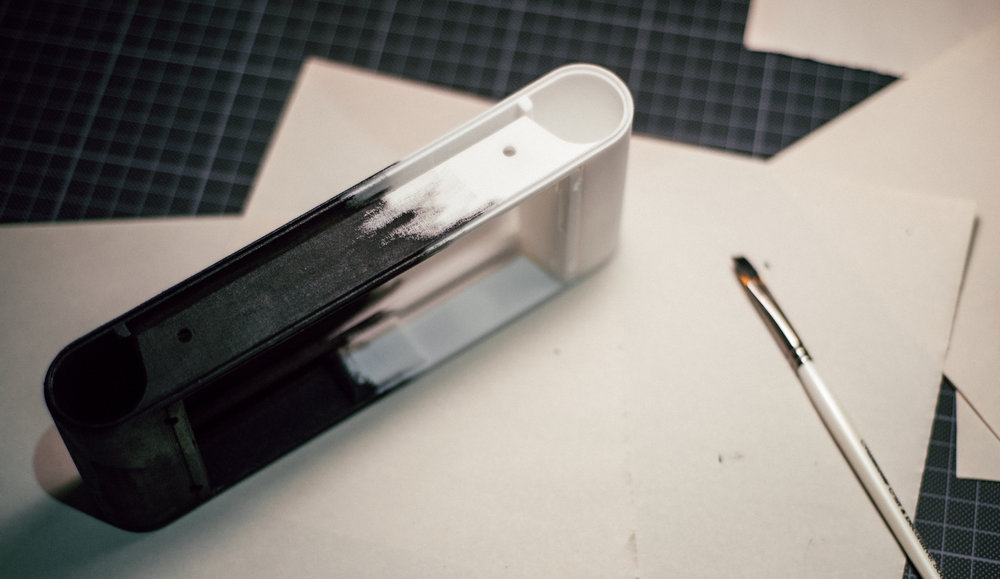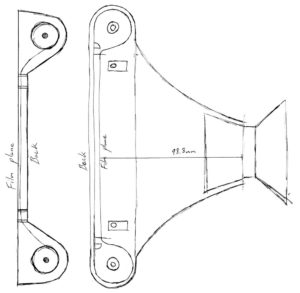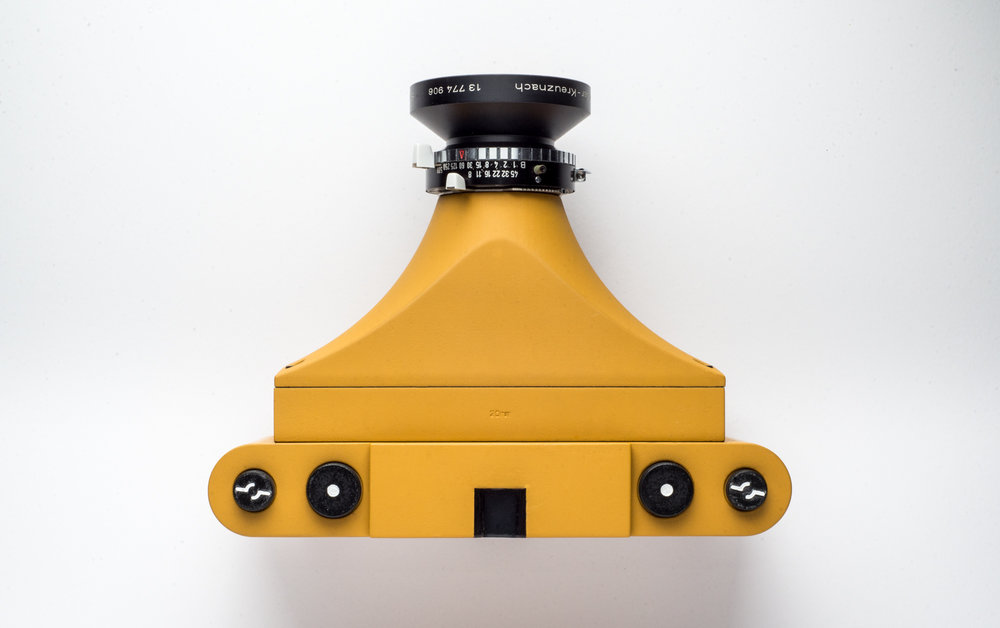 London-based student Paul Kohlhaussen designed and assembled a camera as a product design entry to the 3D Hubs Student Grant. Kohlhaussen created a fully functioning 3D printed camera inspired by three high-end cameras which he couldn’t afford.
London-based student Paul Kohlhaussen designed and assembled a camera as a product design entry to the 3D Hubs Student Grant. Kohlhaussen created a fully functioning 3D printed camera inspired by three high-end cameras which he couldn’t afford.
Kohlhaussen’s 3D printed camera replicated the features of the $5,000 Mamiya 7, the discontinued Hasselblad XPan and the $5,000 Leica M series. Essentially, he wanted to develop a camera that is capable of shooting larger negatives than the standard medium format. Unfortunately, as a starting photographer, Kolhaussen couldn’t afford the abovementioned three $5,000 digital cameras that suit his style of photography and ultimately decided to create his own camera catered to his needs using 3D printing technology.
Key components which Kohlhaussen focused on recreating with 3D printing technology were the large frame of the Hasselblad XPan for large panoramic shoots and the compact style of Mamiya 7 for medium format photography. By creating the exterior frame and other important components of the camera, Kohlhaussen only had to purchase the Schneider Kreuznach 90mm Super Angulon lens to complete his personalized and fully customized camera.
Kohlhaussen applied for a 3D Hubs Student Grant with this entry, showcasing his efficient utilization of 3D printing technology to create a high-performance camera for professional photography. His creation was highlighted as an impressive use case. 3D Hubs co-founder Brian Garret, who launched the initiative on April 12, stated that recognition of a student’s 3D printing project by an established company like 3D Hubs will give students such as Kohlhaussen a competitive edge in their future careers, regardless of the sectors and industries the students may end up in.
“Students are the engineers and designers of the future. With this Grant, as well as our existing student program providing 25% off, we aim to give students a strong foundation in digital manufacturing early on to give them a competitive edge in their future careers,” said Garret.
During the design, development and manufacturing process of the camera, Kohlhaussen looked into various methods that he could use to create a personalized digital camera. Apart from 3D printing, Kohlhaussen investigated into injection molding and CNC but ultimately came to a conclusion that the utilization of 3D printing technology was the cheapest and most efficient way to create his camera in terms of accuracy, time and costs.
More importantly, the use of Selective laser sintering (SLS) allowed him to create complex components with a clean finish and even surface.
“Due to SLS not needing support material during the printing process, it meant different parts complex geometries could be 3D printed with a clean surface finish. To give the camera its unique look it went through various forms of post processing including sanding, a coating of automotive primer and a full cover of sealant,” read the report of 3D Hubs.
In the end, Kohlhaussen was able to design and create a camera which accurately and precisely replicated the features and advantages of three high-end cameras. With no expenses apart from the cost of the lens and the materials he used, Kohlhaussen created a high-end professional-grade camera with excellent finishing, even surface, minimalistic design and robust exterior frame.
Currently, Kohlhaussen is looking into similar methods that can be adopted by photographers across the world. If Kohnhaussen can create and distribute designs for high-end cameras which photographers can easily assemble and 3D print, his project could save thousands of dollars for starting photographers without enough capital and resources to secure high-end cameras.
Despite it being a handmade camera, Kohlhaussen’s personalized 3D printed camera produced high-quality panoramic shots with larger negatives.
In the near future, Kohlhaussen hinted at the possibility of him working with the camera design to provide easier ways for photographers to obtain high-grade cameras without large expenses, democratizing the photography experience through technology.
Subscribe to Our Email Newsletter
Stay up-to-date on all the latest news from the 3D printing industry and receive information and offers from third party vendors.
You May Also Like
3D Printing Unpeeled: New Arkema Material for HP, Saddle and Macro MEMS
A new Arkema material for MJF is said to reduce costs per part by up to 25% and have an 85% reusability ratio. HP 3D HR PA 12 S has been...
3D Printing News Briefs, January 20, 2024: FDM, LPBF, Underwater 3D Printer, Racing, & More
We’re starting off with a process certification in today’s 3D Printing News Briefs, and then moving on to research about solute trapping, laser powder bed fusion, and then moving on...
3D Printing Webinar and Event Roundup: December 3, 2023
We’ve got plenty of events and webinars coming up for you this week! Quickparts is having a Manufacturing Roadshow, America Makes is holding a Member Town Hall, Stratafest makes two...
Formnext 2023 Day Three: Slam Dunk
I’m high—high on trade show. I’ve met numerous new faces and reconnected with old friends, creating an absolutely wonderful atmosphere. The excitement is palpable over several emerging developments. The high...




































